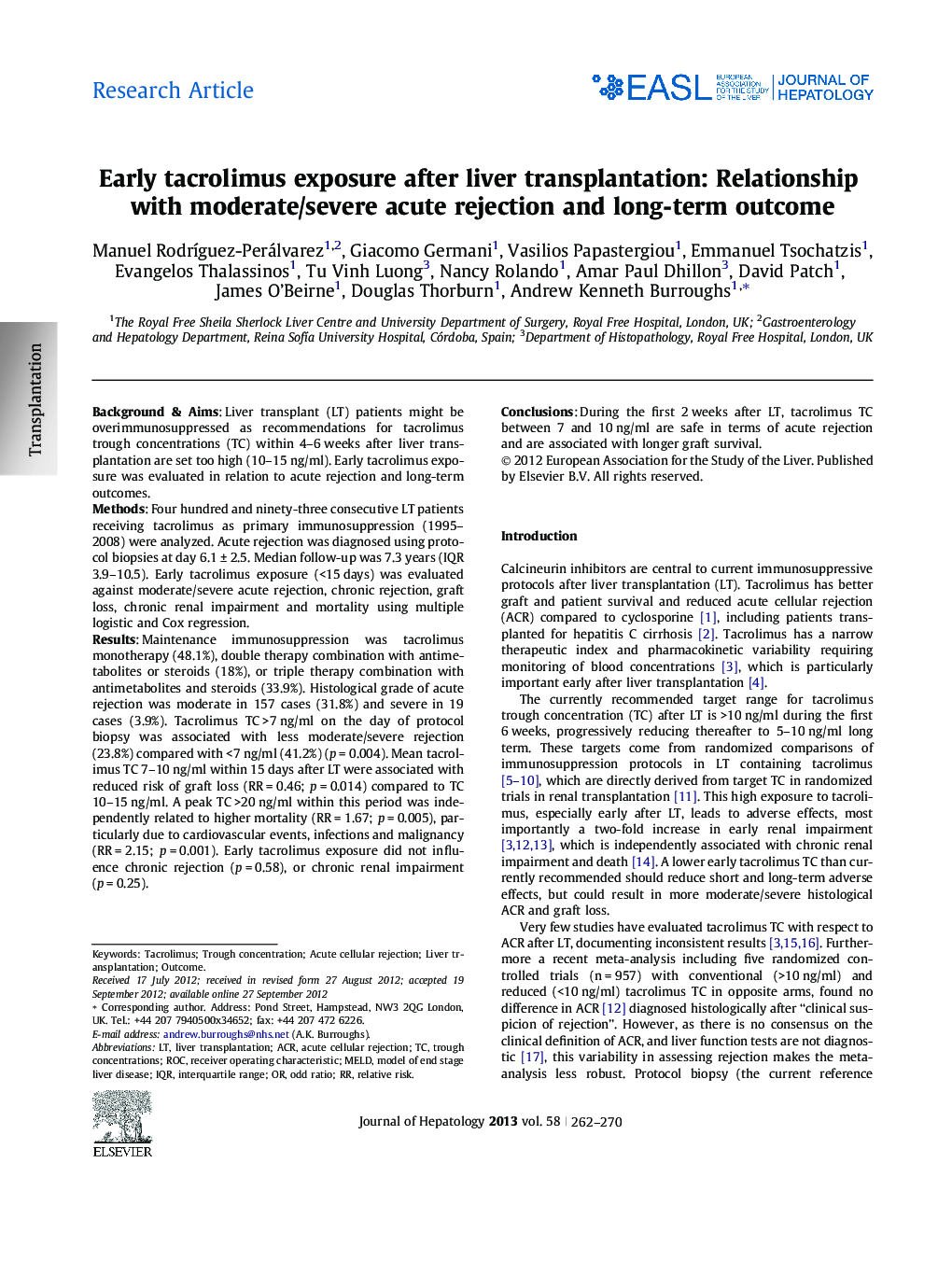| Article ID | Journal | Published Year | Pages | File Type |
|---|---|---|---|---|
| 6104930 | Journal of Hepatology | 2013 | 9 Pages |
Background & AimsLiver transplant (LT) patients might be overimmunosuppressed as recommendations for tacrolimus trough concentrations (TC) within 4-6 weeks after liver transplantation are set too high (10-15 ng/ml). Early tacrolimus exposure was evaluated in relation to acute rejection and long-term outcomes.MethodsFour hundred and ninety-three consecutive LT patients receiving tacrolimus as primary immunosuppression (1995-2008) were analyzed. Acute rejection was diagnosed using protocol biopsies at day 6.1 ± 2.5. Median follow-up was 7.3 years (IQR 3.9-10.5). Early tacrolimus exposure (<15 days) was evaluated against moderate/severe acute rejection, chronic rejection, graft loss, chronic renal impairment and mortality using multiple logistic and Cox regression.ResultsMaintenance immunosuppression was tacrolimus monotherapy (48.1%), double therapy combination with antimetabolites or steroids (18%), or triple therapy combination with antimetabolites and steroids (33.9%). Histological grade of acute rejection was moderate in 157 cases (31.8%) and severe in 19 cases (3.9%). Tacrolimus TC >7 ng/ml on the day of protocol biopsy was associated with less moderate/severe rejection (23.8%) compared with <7 ng/ml (41.2%) (p = 0.004). Mean tacrolimus TC 7-10 ng/ml within 15 days after LT were associated with reduced risk of graft loss (RR = 0.46; p = 0.014) compared to TC 10-15 ng/ml. A peak TC >20 ng/ml within this period was independently related to higher mortality (RR = 1.67; p = 0.005), particularly due to cardiovascular events, infections and malignancy (RR = 2.15; p = 0.001). Early tacrolimus exposure did not influence chronic rejection (p = 0.58), or chronic renal impairment (p = 0.25).ConclusionsDuring the first 2 weeks after LT, tacrolimus TC between 7 and 10 ng/ml are safe in terms of acute rejection and are associated with longer graft survival.
